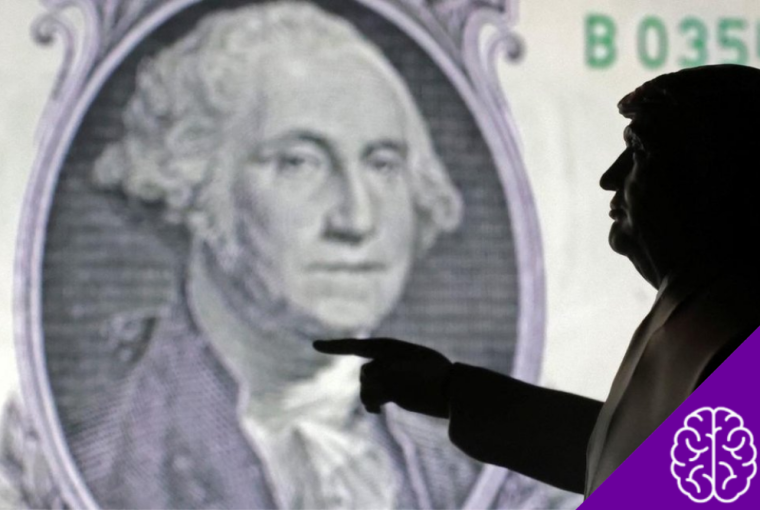The faces on U.S. dollar bills are more than just portraits; they’re a reflection of the nation’s history, values, and evolution. The U.S. dollar as we know it took its current form in the 20th century, showcasing notable figures who played pivotal roles in shaping America.
But who exactly are these individuals, and why were they chosen? Let’s take a closer look at the presidents and historical figures immortalized on the seven dollar bills in circulation today.
A Quick Overview of U.S. Dollar Bills
Currently, there are seven denominations of U.S. dollar bills in use, featuring a mix of five former presidents and two other significant historical figures.
The tradition of using impactful individuals on the currency demonstrates the nation’s recognition of their contributions to its history and development.
The Faces on U.S. Dollar Bills and Their Stories
$1 Bill – George Washington
- Who He Was: George Washington was the first U.S. President (1789-1797) and a Founding Father. He led the Continental Army to victory during the Revolutionary War and presided over the Constitutional Convention.
- Why He’s Featured: Washington’s leadership during America’s founding made him one of the most iconic figures in U.S. history. It’s no surprise that he occupies the front of the most widely-used currency.
$2 Bill – Thomas Jefferson
- Who He Was: Thomas Jefferson was the third President (1801-1809) and the main author of the Declaration of Independence.
- Why He’s Featured: Jefferson’s role in drafting the Declaration cemented his legacy as a champion of liberty and democracy.
- A Fun Fact: The $2 bill is one of the rarest in circulation today, often considered a collector’s item.
$5 Bill – Abraham Lincoln
- Who He Was: Abraham Lincoln served as the 16th President (1861-1865). He led the Union during the Civil War, abolished slavery with the Emancipation Proclamation, and modernized the U.S. economy.
- Why He’s Featured: Lincoln’s unwavering commitment to unity and justice during one of the most turbulent times in U.S. history made him a symbol of resilience and progress.
$10 Bill – Alexander Hamilton
- Who He Was: Alexander Hamilton was the first Secretary of the Treasury (1789-1795) and one of the nation’s Founding Fathers. Known for his advocacy for a strong federal government, he was instrumental in establishing the U.S. financial system.
- Why He’s Featured: Hamilton’s financial policies laid the groundwork for America’s economic foundation, making his place on the currency well-deserved.
- Did You Know? The Treasury Department depicted on the back of the $10 bill pays homage to Hamilton’s pivotal role.
$20 Bill – Andrew Jackson
- Who He Was: Andrew Jackson was the seventh President (1829-1837) and a founder of the Democratic Party. Known for his populist leadership style, he expanded the rights of common citizens.
- Why He’s Featured: Despite controversies surrounding his legacy, Jackson’s influence on American politics and his role in shaping the nation make him a prominent figure.
$50 Bill – Ulysses S. Grant
- Who He Was: Ulysses S. Grant was the 18th President (1869-1877) and a Union General during the Civil War. He played a crucial role in achieving Union victory and later worked to extend civil rights as president.
- Why He’s Featured: Grant’s leadership on the battlefield and his efforts toward post-war reconstruction earned him a place on the $50 bill.
$100 Bill – Benjamin Franklin
- Who He Was: Benjamin Franklin was a polymath, inventor, diplomat, and a key figure in America’s independence. Though never president, Franklin’s contributions to science, governance, and activism define his legacy.
- Why He’s Featured: Franklin’s wisdom, innovation, and diplomatic skill make him a quintessential symbol of American ingenuity.
Secrets Behind the Design
Beyond the portraits, every dollar bill is packed with intricate designs and security features that bring a layer of technical and symbolic depth to America’s currency:
- Color Tints & Themes: Each denomination is printed with distinct color hues to help differentiate them.
- Iconic Architecture: Almost all bills feature iconic American buildings on the reverse side, from the Lincoln Memorial to Independence Hall.
- Advanced Security Features: From watermarks to color-shifting ink, these elements prevent counterfeiting and ensure trust in currency.
Fun Facts About U.S. Dollar Bills
- “Benjamins” Is Slang for Money: The nickname comes from Benjamin Franklin’s prominent place on the $100 bill.
- Early Dollar Bills Looked Very Different: Before presidents and historical figures, designs included Native American chiefs and mythological beings.
- Rare Bills Can Be Collectible: Fewer $2 bills are printed, making them a sought-after keepsake among enthusiasts.
- Eco-Friendly Approach: Dollar bills are primarily made of cotton and linen, which gives them their iconic texture and longevity.
What Do These Figures Represent?
The individuals chosen to be on U.S. currency represent ideals Americans hold dear, from liberty and leadership to vision and determination. They acted as architects of policies, institutions, and movements that defined the nation’s trajectory.
A Look to the Future!
Currency designs are subject to change, often reflecting cultural evolution or societal progress.
While the current designs are steeped in tradition, discussions about adding new faces and themes continue to surface, demonstrating how the past and the present remain intertwined in shaping the nation’s identity!


